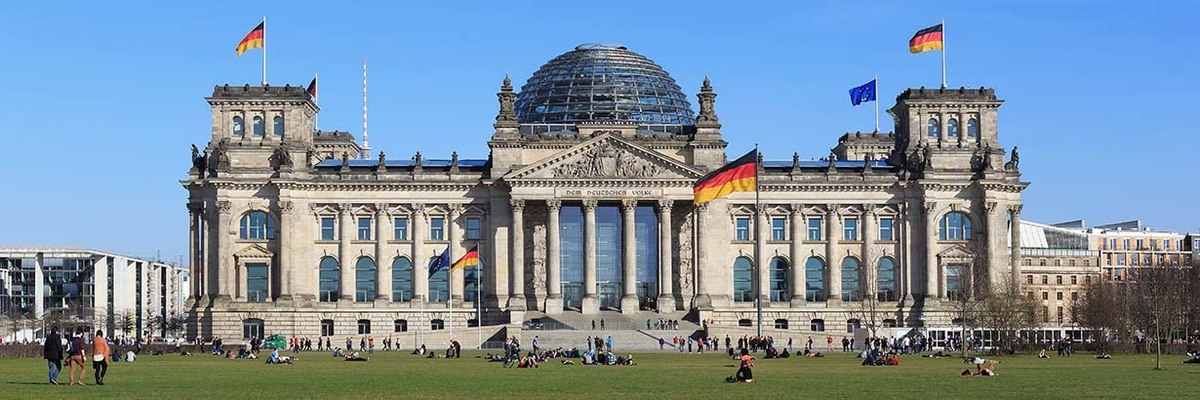Christian Democrats on course to be largest party, with far-right AfD in second place
The first YouGov MRP of the 2025 German federal election campaign suggests that the centre-right Christian Democrats (CDU/CSU) are on course to be the largest party in the Bundestag. Our model’s central estimate projects them to win 222 of the 630 seats in Germany’s parliament, as well as 30% of the vote, up from 24% in 2021. This would likely mean that CDU leader Friedrich Merz will be the next chancellor of Germany.
The far-right Alternative for Germany (AfD) are also expected to make gains, with the 146 seats and 20% of the vote projected by the YouGov model the best result for a party to the right of the Christian Democrats in post-war Germany.
Current chancellor Olaf Scholz’s Social Democrats (SPD), however, will suffer clear losses, with their projected 16% vote share down ten percentage points on the last election and their worst result in the post-war period. Their coalition partners the Greens are likely to fare less badly, with the model’s central estimate of 14% of the vote just a single point less than their result three-and-a-half years ago.
The MRP gives a central projection of 6% of the vote and 45 seats for the new left-wing but socially conservative BSW (Sahra Wagenkneckt Alliance), while the liberal Free Democrats, who resigned from the government last November, and socialist The Left party are projected to win no seats in the next Bundestag on this result.
However, due to the specific rules of Germany’s electoral system, it is within the range of possibilities from our MRP that the FDP could end up with seats after all, or indeed that the BSW fail to win any.
Germany’s version of proportional representation includes a 5% vote share threshold that parties typically need to pass in order to win seats (although there are some exceptions). Although our first MRP gives the FDP a central vote share projection of 4.5%, just below this threshold, the model gives a higher bound for the party of 6%, which could secure them as many as 41 seats in parliament.
By contrast, the BSW’s central vote share estimate of 6% comes with a lower bound of 4.7%, which would leave them falling short in their first federal election.
Who will form the next government?
In terms of how this will shape the next Bundestag, our central estimates have the CDU/CSU winning 222 of the 630 seats in parliament, with the AfD on 146, the SPD on 115, the Greens on 101 and the BSW holding 45.
With 316 seats needed for a majority in the Bundestag, this makes a so-called ‘grand coalition’ between the CDU/CSU and the SPD the most plausible two-party coalition. Such coalitions governed Germany from 2005 to 2009 and from 2013 to 2021.
A ‘black-green’ coalition between the CDU/CSU and the Greens would also hold a majority, though with 322 seats between the two parties, it would be a slim one.
Constituency map shows strong East/West divide in German voting
Part of Germany’s ‘mixed’ voting system are 299 constituencies or ‘direct mandates’, which are elected by a first past the post system similar to the one used for British general elections. If a party wins three or more of these seats, they are able to bypass the 5% threshold usually needed to qualify for proportional representation, which is what fills the rest of the seats. This is how The Left won representation in 2021, despite winning just 4.9% of the vote.
The central estimate of the YouGov model projects that in the 2025 election the CDU/CSU will lead in 208 of the constituencies, up from 143 in 2021. The AfD will increase the number of seats they top the poll in from 16 to 50, while the SPD will fall from 121 to 35 and the Greens from 16 to 5.
Our model shows The Left leading in only one constituency (Berlin-Treptow-Köpenick), although under the aforementioned electoral rules they would not be able to keep the seat without winning three seats in total or 5% of the total vote.
Most striking, though, is the clear divide visible between former East and West Germany. The AfD are projected to lead in all but two of the constituencies that were historically in East Germany, but none in the areas that made up West Germany or West Berlin, where the CDU/CSU are expected by our model to win most of the seats.
See the full results here (in German)
Full constituency-level projections (Excel)
What’s your view on Germany politics, and everything else? Have your say, join the YouGov panel, and get paid to share your thoughts. Sign up here.
Photo: Getty








